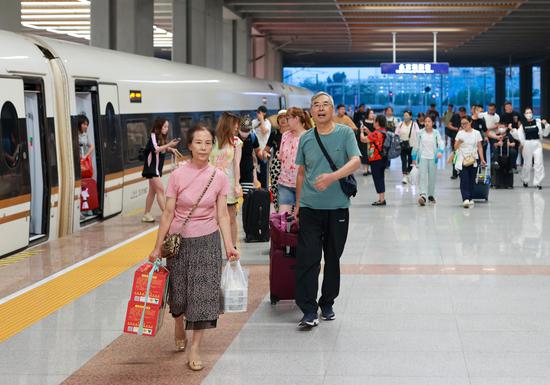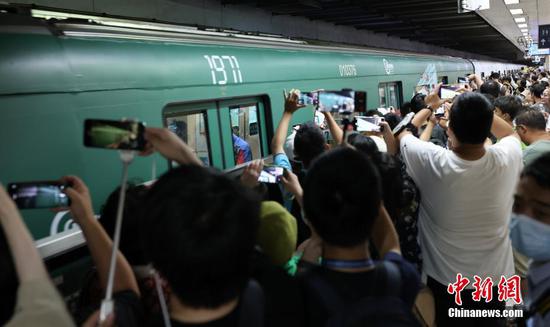(ECNS) -- As the summer blazes across the country, a remarkable shift in travel preference is sweeping China’s young population. For these travelers, gone are the days of cookie-cutter tours.
Instead of the typical tourist experiences, they are embracing unconventional methods such as citywalks, opting for bathhouses over hotels, and even rolling the dice to decide their next destination.
Emphasizing a deeper connection with local people, cultures, food and music, slow travel has captured the heart of numerous young people.
Electric scooter rental market heats up
"Riding a 'little electric donkey' (the nickname for electric scooters) is very convenient. There's no need to worry about getting stuck in traffic. You can stop at any time to enjoy the beautiful scenery or visit interesting shops. It offers a lot of freedom," said a woman surnamed Li, an avid advocate of electric scooters.
"Compared to hiring a taxi, renting a scooter is much cheaper, especially for students like me. Plus, photos taken on the scooter are tinted with a nostalgic artistic feel."
This summer, electric scooter rental in tourist cities such as Nanjing, Haikou, Hangzhou, Dali, Rizhao, Beidaihe, and Pingtan Island, has seen a significant increase in popularity, with many shops short on supply.
"Around 100 electric scooters could be rented out at around 10 in the morning,” said the owner of an online-authorized electric scooter shop in Weihai City, Shandong Province.
The daily rental price for electric scooters in Weihai, Shandong Province, ranges from 40 to 90 yuan (approximately $5.5 to $12).
To cater to college students, many merchants offer deposit-free promotions.
The city government has also set up widespread charging stations and drop-off stations near tourist attractions to enhance user experience.
Cross-provincial travel by intercity buses
Instead of taking a flight or high-speed train, some young people have opted for a completely different approach: public buses.
Liu Huaqiang, 32, who enjoys slow-paced travel and loves to design his own routes, is one of the pioneers of public bus travel in China.
On July 19, 2020, the maverick shared a theoretically feasible bus transfer route from Shanghai to Beijing on social media.
He later planned routes to various destinations, put these journeys into practice, and documented his experiences on social media. His unique approach to travel has sparked discussions among netizens.
On Douyin, the Chinese version of Tiktok, one of his accounts has garnered over 1.95 million likes for his "bus travel" diary.
"Planning the route before departure is the biggest challenge in this process," said a man surnamed Song, who tried cross-provincial bus travel. Encouraged by pioneers like Liu, he decided to follow suit.
"I didn't go too far; just took a trip from Beijing to Zibo, Shandong Province. It took three days in total, with a week of prior route research and preparation. It is not always a majestic landscape, but the sense of accomplishment is unparalleled."
Similar to Song, teenager Meng Xiang spent three and a half days traveling. He changed buses 38 times, crossed nine prefecture-level cities covering a total of 1,133 kilometers, and spent only 153 yuan on bus fares.
Meng shared his thousand-kilometer bus journey from a third-person perspective in an 8-minute video and uploaded it to social media, resonating with the essence of youthful freedom.
Persistent popularity of self-driving tours
Among all the creative travel methods involving transportation, the self-driving tour has been around for many years and remains popular.
"It was a 10-day loop tour across Gansu Province and Qinghai Province to purify my heart. Hitting the road, I listened to my favorite songs and gazed at the blue sky and white clouds along the way," said Li.
Unlike in the past, when self-driving tours were mainly chosen for the convenience of short-distance travel, many tourists this year opt for this mode s to experience the local culture more deeply, savor local life at a leisurely pace, and enjoy the journey on the road rather than focusing solely on the destination.
According to a self-driving tour report released by Ctrip, an online travel agency in China, domestic self-driving tour orders grew by over 80 percent this summer compared to last year, representing a 352 percent surge from the same period in 2019.


















































 京公网安备 11010202009201号
京公网安备 11010202009201号